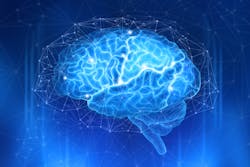There is a science behind how people work together. “Many employees are paid to think for a living, but there’s been little consideration given to what’s happening in our brain when we perform certain tasks in different scenarios,” says Ben Hamley, Future of Work Lead, APAC at JLL, in an article.
To tap into this knowledge researchers scanned the brains of volunteer employees at JLL's office in Singapore, while they performed tasks they would do on a normal working day.
“Now we’re able to get insights into the science of when, where and why the best kind of work gets done – but we’re not stopping there,” Hamley says. “We’re interested in how the design of the physical space affects cognition, and how we might be able to design more inclusive spaces for neurodivergent groups or spaces that help nudge people into a state of flow.”
The firm did a neuroscience study with a neuroinformatics firm, EMOTIV and came to some interesting conclusions.
Brains work better together in the morning
People in the study were 12% more engaged when they worked together in the morning compared to when they did the same work alone at a computer, with their brains more active and aroused when others were around.
The morning element was important. The work people’s brains were doing, known as cognitive load, was on average 10% higher compared to the afternoon.
“Armed with this knowledge, people could begin to think more about how they self-manage their calendars and workday with morning and afternoons dedicated to different kinds of tasks,” Hamley says. The design of the work itself, where, when and with whom it is done, is just as important as the environment you do it in.”
Sometimes it’s just the vibe
For many people, a noisy office can be distracting, but an eerily quiet one can be worse.
“Some people struggle when things are too quiet – but it remains to be seen if workplaces can go further and curate a certain feeling or vibe,” says Hamley. “It’s not unlike the inspiration people seek from being around – but not with – others when they head out to a café to get some work done.”
It’s why some companies, he says, are using soundscapes and white-noise generators in the office, such as those provided by Moodsonic to the likes of global pharma firm GSK.
Not everything needs to be in person
But for some kinds of work, being together can be counterproductive. When participants in the study were asked to attend a short presentation and complete a comprehension test on the content, their attention on average was 10% lower, and they were 8% less relaxed and 18% less excited.
“Traditionally we expect learning and development would be better done in person, but perhaps we’ve become so accustomed to engaging with content online, that being with others makes us a bit uneasy, especially if we’re being tested on it or required to ask a question,” says Hamley. “Rehearsing a question with the safety net of a mute button or the option to type it out might actually help.”
To find out more about JLL’s work in neuroscience, click here.
About the Author
EHS Today Staff
EHS Today's editorial staff includes:
Dave Blanchard, Editor-in-Chief: During his career Dave has led the editorial management of many of Endeavor Business Media's best-known brands, including IndustryWeek, EHS Today, Material Handling & Logistics, Logistics Today, Supply Chain Technology News, and Business Finance. In addition, he serves as senior content director of the annual Safety Leadership Conference. With over 30 years of B2B media experience, Dave literally wrote the book on supply chain management, Supply Chain Management Best Practices (John Wiley & Sons, 2021), which has been translated into several languages and is currently in its third edition. He is a frequent speaker and moderator at major trade shows and conferences, and has won numerous awards for writing and editing. He is a voting member of the jury of the Logistics Hall of Fame, and is a graduate of Northern Illinois University.
Adrienne Selko, Senior Editor: In addition to her roles with EHS Today and the Safety Leadership Conference, Adrienne is also a senior editor at IndustryWeek and has written about many topics, with her current focus on workforce development strategies. She is also a senior editor at Material Handling & Logistics. Previously she was in corporate communications at a medical manufacturing company as well as a large regional bank. She is the author of Do I Have to Wear Garlic Around My Neck?, which made the Cleveland Plain Dealer's best sellers list.
Nicole Stempak, Managing Editor: Nicole Stempak is managing editor of EHS Today and conference content manager of the Safety Leadership Conference.
